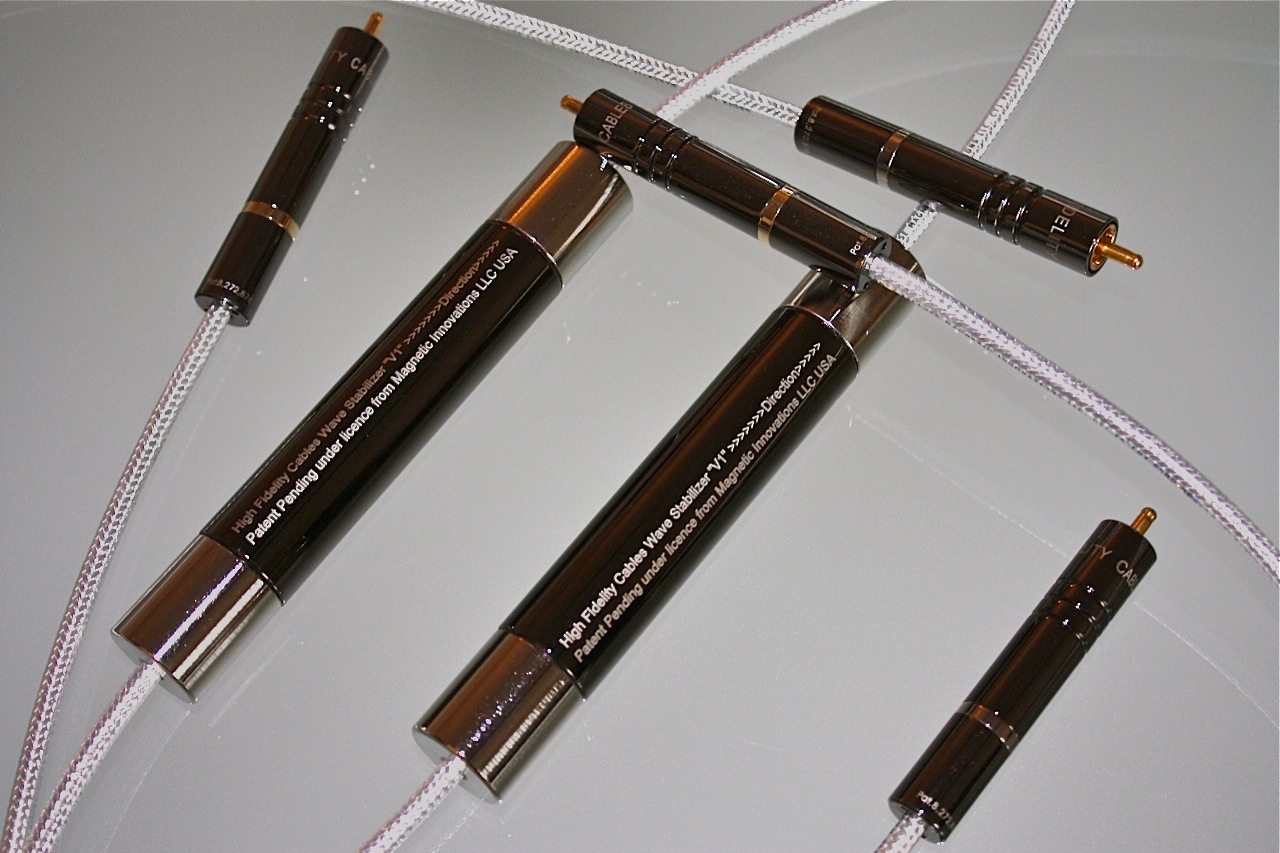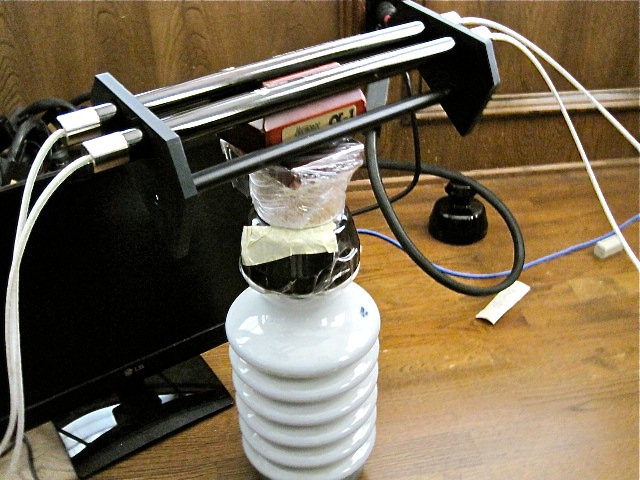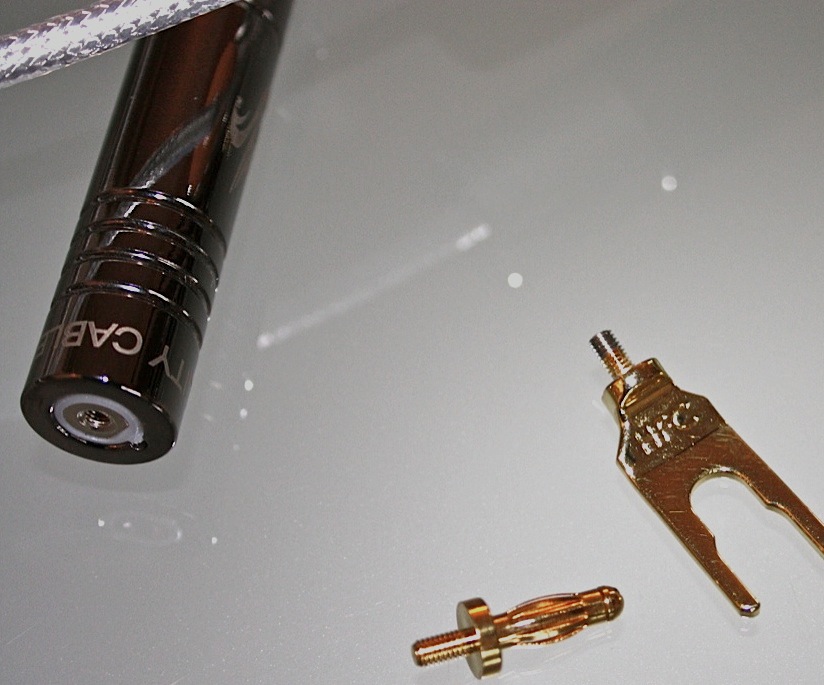High Fidelity Cables CT-1 Ultimate Series

High Fidelity Cables makes three grades of audio cables: the original CT-1, the CT-1 Enhanced, and finally the CT-1 Ultimates, which are the subject of this review. Having raved about the CT-1 Enhanced cables, can I say the Ultimates are better? Clearly there’s a sonic family resemblance between the three lines of cables. All use the “magnetic conduction” technology except with increasing power and, of course, expense. When I first heard the CT-1s, I was very impressed with their ease, clarity, and detail. The soundstage had tremendous realism based on depth, sense of being involved in it, and ambience of the sound in the hall, studio, or auditorium. Often you get a great feeling for the real space of the recording venue. When I heard the CT-1 Enhanced, it was clear that they were better in all areas compared to the CT-1s. And yes, the CT-1 Ultimates are clearly better than the CT-1 Enhanced. But in all sincerity, don’t listen to the Ultimates unless you are willing to buy them. Start with the CT-1s, you maybe very happy there.
Physically the three grades of High Fidelity cables look very much alike. None of them have the model printed on them. The cable seems the same for all the interconnect cables. It is somewhat stiff, does not like to be twisted, and has large PinLok connectors that have magnets within them. There are, however, differences that greatly impact performance.
The original CT-1s feature coaxial construction and a proprietary highly permeable alloy, transmission line conductor with a metallic shield ground separated from the conductor by pure Teflon. So basically, you have a coaxial cable with special connectors with many magnets in them in their patented design. The metals used in the cabling are not what we might expect in a signal cable, but then “magnetic conduction” is not what we expect in interconnects. The RCA connectors are treated with Stabilant 22 conductive polymer, which greatly enhances electrical contacts. The original CT-1s are this basic cable.
The Teflon dielectric in the Enhanced and Ultimate cables are treated with a proprietary “Neutral Chem.” The connectors on both also differ from the original CT-1s. The Enhanced have gold plated contacts and a new alloy center pin that further increases permeability. The Ultimate connectors have “rare earth,” very powerful magnets and stronger magnetic plates. Their center pin is also pure nickel. Both Neutral Chem and Stabilant 22 are used in the Ultimate connectors. The conductor material itself used in Enhanced and Ultimate Transmission lines is of higher magnetic permeability. The similarities in design list all three cables as CT-1 or “Conductor Technology One” with each in the series having a little extra technology added to it while staying within the overall transmission line design.
Next, we see “wave guides” or black glass tubes with silver caps on the ends with the cabling extended through them on the two top HFCs. The Enhanced have a six-inch wave guide on the body of the cable on the speaker wires. The patented wave-guide is made of a series of extremely powerful magnetic plates with specialized polarity that forces energy signal to the core of the conductor. The Ultimates have “wave-guides” on all cables and on the speaker wires, they are sixteen inches long and mounted in a stand. They also have silicon rings around the connectors to isolate them electrically and to dampen vibrations. The unique application of the wave-guides lowers mechanical based vibrations as well by decoupling the signal path mechanically lowering the unwanted noise that typically follows conductors and causes distortion. So you can see that the apparently quite similar High Fidelity series of cable are not very similar in reality.
Setup
Since there are no High Fidelity balanced cables as yet, I used my Exemplar XP-2 in single-ended mode into my BMC M2 amps’ single-ended inputs. My Exemplar prototype DAC has only single-ended outputs. The BMC MCCI phonostage was also connected single-ended into the preamp. I had two pair of CT-1 Ultimate interconnects with one used from the preamp to the amps. The other was used from the dac or from the phono stage to the preamp depending on the source I wanted to use. All cables were kept off the floor and ac lines although the latter causes no problem. The CT-1 Ultimate speaker wires were suspended about 18 inches off the floor. Here I experimented with them sitting on the floor initially.

They sounded quite good there, but when I raised them atop my substantial column of ceramic isolators and Combak cable isolators, the sound improved greatly, and they remained there. Obviously, this is not a recommended solution in circumstances where young children or pets are around. All of the Ultimate cables were on a cable burner for three days while I was out of town. They have improved greatly over the last month and a half, and given my experience with the CT-1 Enhanced, I expect they will continue to do so for several months.
Listening Sessions
During my correspondence with High Fidelity Cables’ Rick Schultz, he wrote: “Upon installing the first cables, the noise floor of the system will decrease dramatically due to lowering of distortions. This effect is measurable as shown by the University of Toronto. Sonically this creates encourages using a higher volume. This is due to removal of distortions following the signal being removed. These distortions clone the signal itself. The process of distortion can be understood by understanding its similarity to amplification. Amplification whether it be transistor or tube simply adds energy to the entire signal path, music and distortion. However, when the Magnetic conduction cable technology is installed only the original music signal will be left, as distortion is greatly reduced.”
Yes, I have consistently noticed that I play my system at a higher gain than with other cables. I consistently noted that the settings were higher with these cables than with others but that I was not irritated in the least.
He (Schultz), also noted that with time, using all High Fidelity cables would affect the components along the signal path between the High Fidelity cables. This discourages using other cables, which would break the chain of magnetics. I did consistently notice that a full chain of these cables from source to speakers in time gained a magical realism. This makes A/B comparisons hazardous.
I don’t really understand why but these cables seem outstanding for about two hours after being initially installed, only to go down hill after that for a day and two. I introduced the source to preamp pair of CT-1 Ultimates and listened with broken in CT-1 Enhanced downstream. As with going from the CT-1 to the CT-1 Enhanced, going further to the CT-1 Ultimates revealed more details of the performers’ precise locations. I listened to Diana Krall’s A Case of You after installing the CT-1 Ultimates between the preamp and the amps. This was a greater improvement than the initial source to preamp connection. The music was better, but also I could hear the audience out front with their chatter, coughs, etc. The transparency of the presentation was so much more real.
Finally, I put in the speaker wires. This was an improvement even greater than that of the preamp to amp interconnects. Again this was replacing the CT-1 Enhanced with the CT-1 Ultimates. Initially, because the Ultimate speaker wires come in a frame, I used them on the floor. The Enhanced speaker wire had been up on my stand of insulators. But it was on putting the Ultimate speaker wire up off the floor where I previously had the CT-1 Enhanced that I was most in awe with the Ultimates.
 I have always loved Joni Mitchell’s “A Case of You,” both as initially on her 1971 album, Blue, where she seems to have bled in her romances prior to that, and on her 2000 album, Both Sides Now, with a softer remembrance. I was shocked to hear Diana Krall’s version at the 2012 CES, as it was equally worldly wise and her voice is stronger. This is on her, Diana Krall: Live in Paris recording [Verve UNTL 065252].
I have always loved Joni Mitchell’s “A Case of You,” both as initially on her 1971 album, Blue, where she seems to have bled in her romances prior to that, and on her 2000 album, Both Sides Now, with a softer remembrance. I was shocked to hear Diana Krall’s version at the 2012 CES, as it was equally worldly wise and her voice is stronger. This is on her, Diana Krall: Live in Paris recording [Verve UNTL 065252].
The song is not from the large theater where most of the album was record, but rather, in a more intimate arena. She accompanies herself and it is closely miked and very real. The CT-1Ultimates add greatly to the “your are there” character of the recording as you hear much of what is not musical. You hear her pushing the piano peddles, the coughing and presence of the near audience, and the rustling of her clothing. Yes, much realism is not musical, but much is. I have seen videos of her performing this song and she evolves into it. Something is very painful there.
 Another favorite live recording is Frank Sinatra and Count Basie at the Sands [Mobile Fidelity MFSL 2-332). Sinatra’s “One For My Baby And One More for the Road” presents a more vividly real feeling of being there. Sinatra, Basie, the orchestra, and the audience had a vivid presence. Classical albums such as Ansermet’s Highlights from Swan Lake [Decca/First Impression Music LIMK2HD024] even with some tape noise is just astonishingly real save for the fact that I could never have afforded such a seat.
Another favorite live recording is Frank Sinatra and Count Basie at the Sands [Mobile Fidelity MFSL 2-332). Sinatra’s “One For My Baby And One More for the Road” presents a more vividly real feeling of being there. Sinatra, Basie, the orchestra, and the audience had a vivid presence. Classical albums such as Ansermet’s Highlights from Swan Lake [Decca/First Impression Music LIMK2HD024] even with some tape noise is just astonishingly real save for the fact that I could never have afforded such a seat.
On recording after recording I heard more ease, clarity, extension both in the highs and lows, tighter bass, more personal involvement with the music, and just plain realism. I might add that HFC has phono cables and digital cables. I tried one of the latter and was surprised to hear many of the same characteristics as I heard with analog cables.

When you first put any one of the High Fidelity cables on, at least for me, the reaction is one of surprise. They are something different. Your first impressions are of a very open, easy, and clean sound, then you notice the level of detail and all the location information you are receiving. You notice also the timbre of the instruments, the high hat, the blare of the trumpets, the leading edge of the drums, the plucking of the double basses, and the decay of the sound in the hall. Later, and, with the Ultimate most clearly, you heard the precise realism of the sound stage. At least in my room with the Zilplexes and the StillPoints isolation, I have a very high, wide, and precise image before me that is not confined to the dimensions of my room. All of this is most evident in the Ultimates, but only less so with the Enhanced, and further less with the original cables. Every cable with which I have compared them sounds less precise, more muted, and perhaps musical but not real. This includes cables that have surpassed many other cables. The king of the mountain thus far is the High Fidelity CT-1 Ultimate cables. Long live the king!
Almost immediately after I finished this review, my Mac Mini in my Empirical Audio Legacy music server failed. Shortly before this I had decided to get a new turntable, arm, and cartridge and sold the cartridge. So I was dependent on a Macbook Pro, Itunes, and a limited choice of music. Since the new Mac Mini promised superior performance, I decided to hold off submitting the review until I had my music server up and running. That is where I am now.
Time does wonders for the High Fidelity Ultimates. I heard the improvement over the weeks with the Macbook Pro and the new music server is just spectacular. The Ultimates have over a month’s use. What you hear with break-in is just a very precise soundstage with more instruments and subtleties. You become very aware in some recordings of the decay of sounds in the hall. Live recordings indeed come alive, although you always have the confusion about whether you are on stage or in the audience.
I am keeping the review samples and will probably add phono, digital, and another set of interconnects later. I would strongly urge you to give them a listen, but do yourself a favor and start with the CT-1s.
![]()

Specifications: High Fidelity Cables
Interconnects: CT-1 Enhanced $2800/1 m ($350/.5 m), standard $1600/1m ($220/.5m), and Ultimate $4900/1 m ($450/.5 m)
Speaker Wires: CT-1 Enhanced $4200/1.5 m ($700/.5 m), standard $2400/ 1.5 m ($400/,5 m), and Ultimate $7500/1.5 m ($900/.5 m)
Digital Cable: CT-1 Enhanced $1400/1 m ($175/.5 m), standard $800/ 1 m ($100/.5m), and Ultimate $2450/1.0 m ($225/.5 m
Phono Cable: CT-1 Enhanced $2800/1 m ($350/.5 m), standard $1600/1 m ($200/.5m), and Ultimate $4900/ 1 m ($450/ .5 m)
Address:
3941 Legacy Drive
Suite 204, B-230
Plano, Texas 75023
USA
Website: http://www.highfidelitycables.com
Email: info@highfidelitycables.com
Phone:+1-972-312-1902
norm luttbeg
Stereo Times Masthead
Publisher/Founder
Clement Perry
Editor
Dave Thomas
Senior Editors
Frank Alles, Mike Girardi, Russell Lichter, Terry London, Moreno Mitchell, Paul Szabady, Bill Wells, Mike Wright, and Stephen Yan,
Current Contributors
David Abramson, Tim Barrall, Dave Allison, Ron Cook, Lewis Dardick, John Hoffman, Dan Secula, Don Shaulis, Greg Simmons, Eric Teh, Greg Voth, Richard Willie, Ed Van Winkle, Rob Dockery, Richard Doran, and Daveed Turek
Site Management Clement Perry
Ad Designer: Martin Perry





Be the first to comment on: High Fidelity Cables CT-1 Ultimate Series